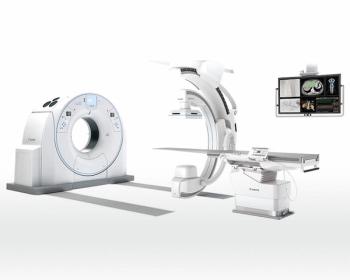
Siemens looks to capitalize on further growth in China
China’s increasing demand for modern healthcare innovations has given a welcome boost to the makers of medical imaging equipment. With no sign of a slowdown in growth, it is little wonder that Siemens Medical Solutions is ramping up its investment in this market.
China's increasing demand for modern healthcare innovations has given a welcome boost to the makers of medical imaging equipment. With no sign of a slowdown in growth, it is little wonder that Siemens Medical Solutions is ramping up its investment in this market.
"The healthcare market in China is the fastest growing in the world. With a market size of about €1.3 billion ($1.6 billion) in 2003, we still see high growth potential," said Hermann Requardt, the member of Siemens Medical Solutions' executive board charged with responsibility for the region. "We calculate a compound annual growth rate of 11% in China from 2003 to 2006."
Siemens Medical Solutions first entered the Chinese market 21 years ago. The company now sells medical products out of 25 different offices throughout China and has plans to open another seven sales offices by early this fall. Additional sales, service, and applications staff will be recruited to help provide customer support nationwide.
"Siemens Medical Solutions is the only provider to offer full-range solutions in the worldwide medical equipment market," Requardt said. "We have introduced cardiology solutions, oncology solutions, hospital IT solutions, and turnkey solutions to Chinese hospitals."
China is also assuming greater importance for the development and manufacture of Siemens' medical products. More than 15 separate items from Siemens' healthcare portfolio are made at one of its four Chinese factories, which are operated by Siemens Shanghai Medical Equipment (SSME), Siemens Hearing Instrument (Suzhou), Siemens Mindit Magnetic Resonance (SMMR), and Siemens X-Ray Vacuum Technology (Wuxi). Associated R&D centers for CT, MR, and audiology equipment have also been set up at the respective manufacturing sites.
"Siemens maintains the same manufacturing and quality standards worldwide," Requardt said. "The quality of products or components that are manufactured in any Siemens factories is ensured to be 'made by Siemens.'"
Siemens began producing ultrasound, CT, and MR equipment in China in 2002. Production continues to expand. Models selected for Chinese assembly may be headed for markets throughout Asia, Europe, and/or the U.S., Requardt said. For example, Siemens' 0.35T Magnetom C! is being made in Shenzhen by SMMR, a joint venture between Siemens and Mindit Instruments. The clam-shaped open MR scanner, unveiled last August (DI SCAN 08/18/05), is destined for markets worldwide, with particular interest expected from U.S. customers. The Novus 1.5T MR scanner, on the other hand, which has been manufactured by SMMR since 2002, is not marketed outside of China.
A significant proportion of Siemens' Somatom CT range is now being developed and assembled in China. Five of Siemens' Somatom scanners are being built in Shanghai by SSME, a joint venture between Siemens and Shanghai Medical Equipment Works. The list of Chinese-made CT scanners includes the Sensation 16, Emotion 6, Emotion Duo, and the single-slice Emotion. Chinese workers also make the entry-level dual-slice system Spirit. Many of these models will be filling sales orders from customers outside China.
Siemens Medical Solutions is also investing time and resources improving its reputation locally. The group's action plan for China includes enhancing marketing, collaboration, and training support programs, Requardt said. Siemens is working with the Chinese Ministry of Health to establish a scholarship program for Chinese doctors and has helped set up an educational scholarship in medical physics with Tsinghua University.
"We also plan to work with the Chinese Ministry of Health to start full-range cooperation in healthcare development, with special focus on rural healthcare improvement," Requardt said.
Newsletter
Stay at the forefront of radiology with the Diagnostic Imaging newsletter, delivering the latest news, clinical insights, and imaging advancements for today’s radiologists.

























